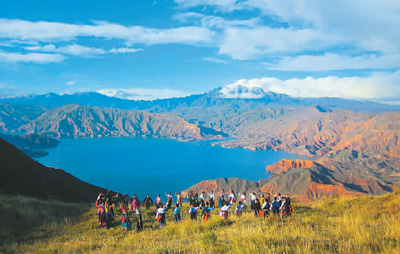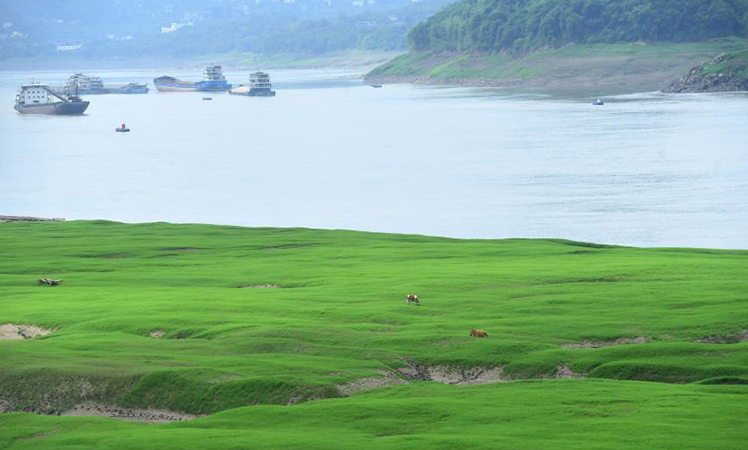Kanbula in NW China's Qinghai advances ecological protection and local tourism industry in parallel
Kanbula in northwest China's Qinghai Province has made strides in recent years to protect its ecological environment while developing a local tourism industry, bringing wealth to residents living in the locality.

Photo shows the scenery of Kanbula, in northwest China's Qinghai Province. (Photo/Pengmaodongzhi)
Kanbula national park is known for its unique Danxia landform, a landscape characterized by reddish sandstone features, and clear rivers and lakes, verdant forests, vegetation, soaring peaks, and Tibetan temples. It welcomed 860,000 tourists from both home and abroad during the period from 2011 to 2021.
It is also an important part of Sanjiangyuan, which is home to the headwaters of the Yangtze, Yellow and Lancang rivers, and therefore carries great ecological significance. “Taking high-quality development as the main task, the national park has constantly improved ecological protection and built our tourism brand,” said Pan Chiqing, deputy general manager of the national park.

Photo shows the scenery of Kanbula, in northwest China's Qinghai Province. (Photo/Pengmaodongzhi)
The scenic spot carries out greening programs, properly deals with garbage and sanitary sewage every year, and has replaced oil-fueled ferries with battery-powered ones. It has also guided tourists to reduce their pressure on the environment, according to Ma Liang, an official with the company that operates the national park.
“It’s really beautiful here,” marveled Li, an amateur photographer from east China’s Zhejiang Province. “It’s my second time to be here. I really like the blue sky, clean water and green mountains. I hope to bring my children here during summer vocation,” he said.
Thanks to the beautiful scenery, local tourism has thrived, boosting the development of home-stay hotels, catering, and sales of local specialties and souvenirs.
According to Pan, the national park offers a large number of job opportunities to the villagers living in the seven villages located inside the national park, includes roles such as divers, guides and cleaners, which not only increases their incomes, but also allows them to work near their homes.
Tsexung Rigzin, a local young man, started a home-stay business with his family in 2018. Every summer, his home-stay hotel receives many tourists. “The environment is getting better and better. And so is our life,” he smiled.
Similarly, Shingkor, who used to dig up caterpillar fungus for a living, now runs a brisk business near his home, selling local specialties such as highland barley biscuits and Tibetan ornaments. “My family members are very satisfied with our life,” he said.
Photos
Related Stories
- Renewable energy generation projects accelerate construction in Qinghai, NW China
- China announces establishment of national park at Qinghai Lake
- China to establish national park at Qinghai Lake
- China to establish national park at Qinghai Lake
- Qinghai Province benefits from improving water environment
- Spectacular view of Xiaqiong monastery in Qinghai
- Scenery of 'the most Martian place on Earth'
- People take nucleic acid tests in Xining, Qinghai
- People take nucleic acid tests in Xining, Qinghai
- View of Nianbaoyuze national geology park in NW China
Copyright © 2022 People's Daily Online. All Rights Reserved.









